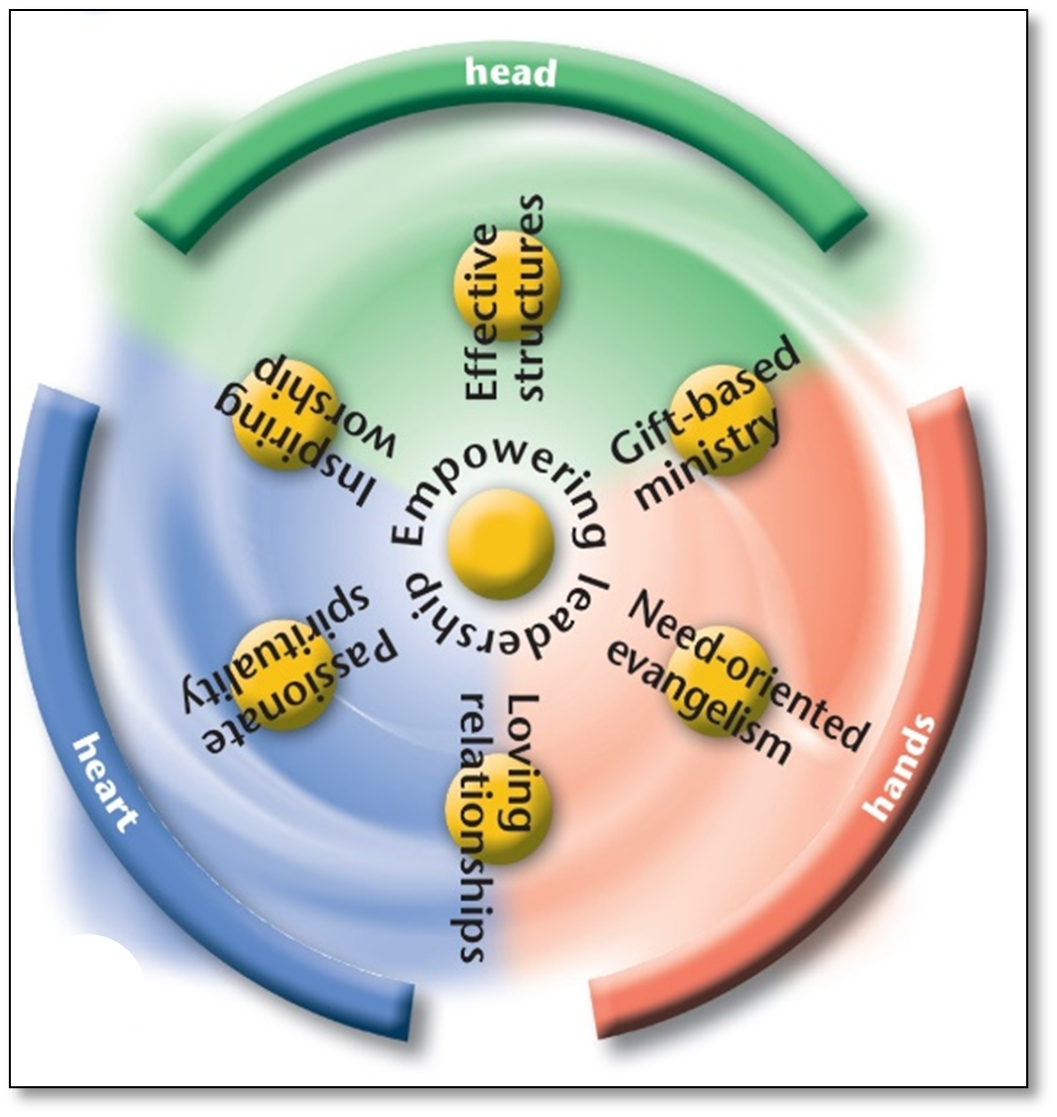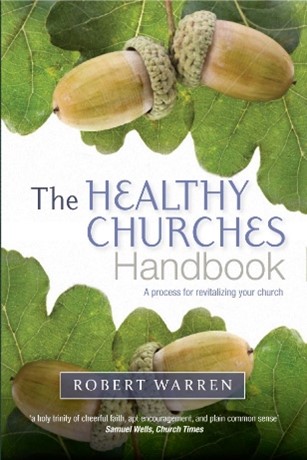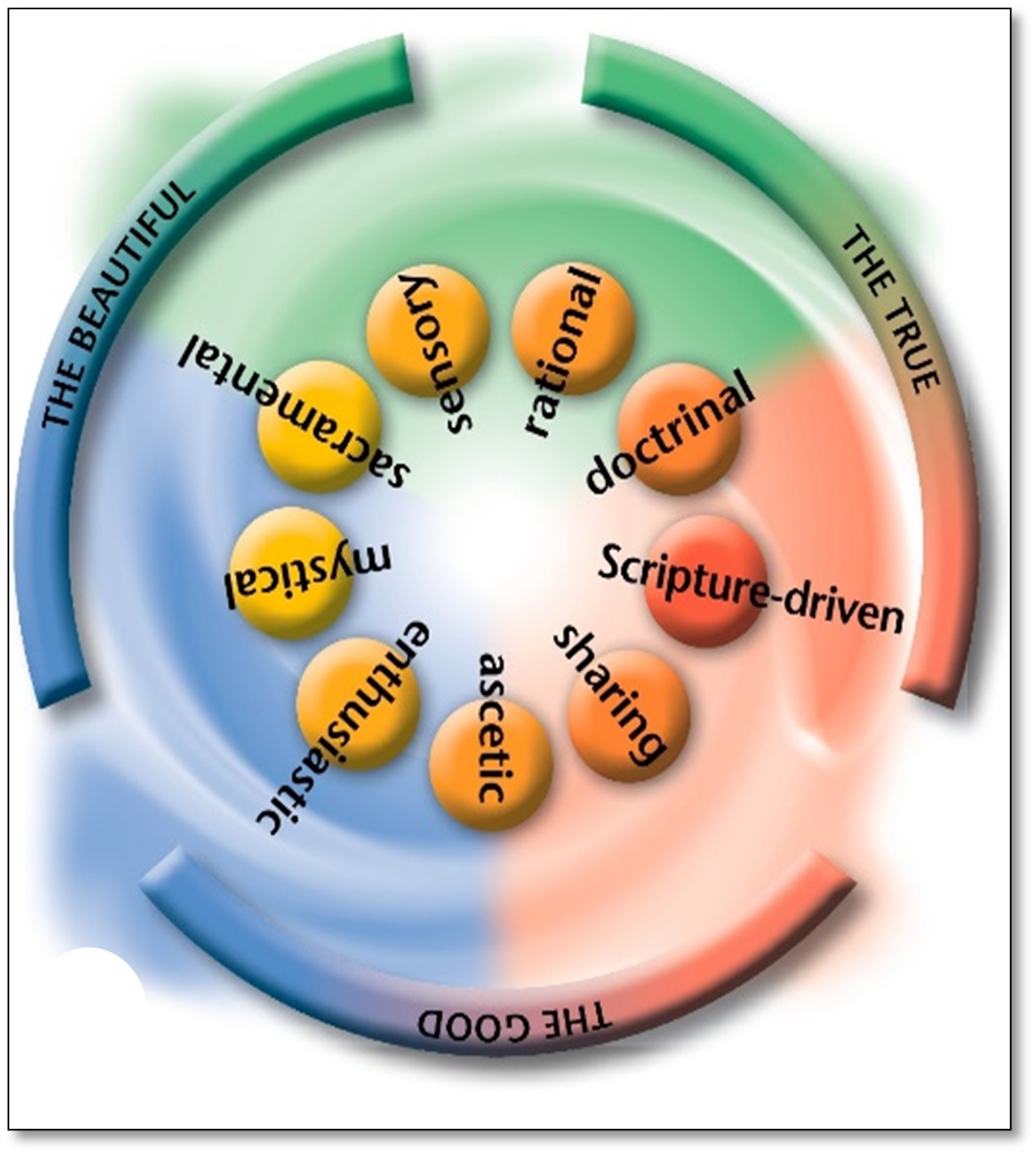
We talk to the Revd Clive Hicks about his role as the diocesan Healthy Churches Development Enabler.
What is your role?
Following on from excellent work done by my predecessors, Martin and Tim, I am called to enable Healthy Churches which are “naturally growing churches that we want to become naturally self-propagating churches.”
In my first 15 months in post I have focused on connecting and understanding the heartbeat of the diocese, the deaneries and individual churches, including Mission Hubs. I now try hard to pray with our own Mission Hub (The Bridge) once a week, I’ve journeyed with a growing number of benefices and churches using NCD surveys, away days and facilitated sessions; I visit and minister at churches, including those in vacancy. I am expecting my role to be more focused and strategic in the next phase. I try to balance my work within the framework of Natural Church Development (blue, green and red – heart, head and hands).
Our developing strategy seeks to build on this work, in an attitude of faith-filled, prayerful adventure. Building on our healthy church vision (shaped by the Natural Church Development movement), we will continue resourcing ‘healthy church’ now with a specific focus on a particular (target) group of parishes / benefices that actively participate with the 8EQs, along with a number of other churches that do not currently engage with 8EQs but have potential for growth or are in communities where there is great mission potential and need, and using a broad range of challenging tools and frameworks to make real growth - missional, numeric and spiritual - a reality.
How would you define a healthy church?

The principles of NCD are as relevant today, as they were ten years ago. Loving relationships are foundational to our churches (toxic, critical cultures can lead to serious problems). Where small groups exist in churches - allowing greater intimacy and pastoral support as well as missional focus - there can be a real buzz of genuine concern and fresh energy. There are, of course six other qualities to consider, and my own interest when I encounter a church is to appreciate the whole culture, and how inter-connected everything is in reality. The white centre to the NCD diagram (green, red and blue) – a space held in this diagram by ‘Empowering Leaders’ – is the aim in all that we do, and is therefore also profoundly related to God as Creator, Jesus Christ (the Son) and the Holy Spirit, all three, in line with biblical truth.
Roger Matthews said that healthy leaders give priority to the important (not just the urgent), they don’t need to be involved in everything, they point away from themselves to develop teams, they will have flexible but firm boundaries (even Jesus was very often absent and unavailable!), and since God is always pointing forwards it is important for them not to dwell on the past (Isaiah 43.18-19). (Healthy Leaders and Healthy Churches, Grove Booklet L13, 2013)
Of course, there are many other ways to look at a ‘healthy church’, and recently I have been stressing three things – to value diversity (for myself appreciating different spiritualities), have clear missional intent and be attentive to the specific needs and preferences of those who are missing from our churches. The diocese has connected healthy church with the state and use of church buildings, there is also the imperative for churches to be ‘safe places’. The financial health (and patterns of giving) in each church are another facet, how a church serves the most vulnerable including those with specific needs (trauma awareness is one such area, with refugees and asylum seekers, and those with special needs), and how the church reaches out in times of crisis and community breakdown. How are the poorest and richest alike valued and included, how are children and young families welcomed and included? I love the line in the Kevin Costner film “Field of Dreams” “If you build it, he will come” – I think it speaks to us as churches to prepare and plan and act to welcome all that we can include, even though we may not see them yet!

Personally, I find Bob Warren’s summaries for healthy churches very relevant. Over twenty years ago some people in the diocese remember him leading sessions at the cathedral. His seven marks for healthy churches are (i) that churches are energised by faith, (ii) are outward-looking, (iii) seek to find out what God wants (listening prayer is crucial), (iv) face the cost of change and growth, (v) operate as a community, (vi) make room for all (that radical hospitality, respectful of differences) and (vii) ‘do a few things and do them well’ (our busiest churches do well to heed this challenge, but also smaller churches that are discouraged and less able to face change …. I urge churches I work with to “start with a few things”.) The acorns are a good image for this.
Where do you see references to healthy churches in the diocese?
It’s fair to say that the eight essential qualities we have already discussed are still on the minds of clergy and lay people in churches across the diocese. But the impact of turnover of leadership and changes in membership, heightened by the Covid pandemic, mean that it is certainly not the only thing people are discussing. Fresh concerns for the environment (eco church, net zero targets etc) are one example of a value guiding priorities in a growing number of churches. For me, ‘eco church is healthy church’, but not in an exclusive way. I think the Growing Faith agenda with schools, churches and families connecting with God and each other, represents another way of addressing ‘health’, with a greater integration than there has been before.
It is also fair to say that health can be judged by missional and numerical growth, yet can be present in even the smallest church where there is prayerfulness and unity. I have been listening to the voices of intercessors and spiritual guides for twelve months, and one recurring theme is the place of creativity and beauty – whether in liberating art, music, poetry and theatre - to take us in fresh and very different directions.
Two highlights for me this year were a day trip to Oxford with a group from the diocese, connecting with C.S. Lewis and his life/literature – just by his old house, The Kilns, is a nature reserve named after him - the sizable pond reminded me of the beavers in The Lion, the Witch and the Wardrobe - and an away day with a lovely church family in North Warwickshire where I asked them ‘what is the most important thing in your church/parish?’ - by the end of the day I felt profoundly that the health of that church lay in the beating heart, the loving community, gathered that day to worship, pray and plan.
Can you explain the theme of 'Rewilding the church'?
It is embedded in my Job Description already – to aim for “naturally growing churches that we want to become naturally self-propagating churches. Our developing strategy seeks to build on this work, in an attitude of faith-filled, prayerful adventure.” Christian Schwarz (NCD founder) talks about this in quite some detail in his books. I was on Iona in October 2022, when out of the blue someone came up to me and declared the word ‘Wild’ over me – later I was given the precious gift of a purple stole with a wild goose embroidered on it. Seeing a BBC programme ‘The Wild Gardener’ shortly afterwards excited me about the parallels with the ‘healthy church agenda’ – not least the importance of the pond (and soil), the interconnectedness of everything in an ecosystem (and church), the holistic way of looking at the world/restoring long lost species (addressing the question as to ‘who is missing from church?’).
I put out a consultation document in May, and that process is still ongoing, largely because my own learning, journey and sense of vocation continues apace. I encountered the Affric Woods and Dundreggan Rewilding Centre (Scotland, June), the Warwickshire Wildlife Trust AGM (with a marvellous presentation on restoring the nearly extinct hazelnut dormice to carefully prepared woodland in Ryton/Bubbenhall), and then a visit to A Rocha (charity that administers Eco Church programmes) in Canada (October), where I was excited by the skills of professionals and volunteers alike, the captivating enthusiasm and commitment of young Christians caring for creation. This all continues to fuel my own passion and priorities to see us together ‘rewild the church.’
Steve Aisthorpe already wrote a book with this title (Rewilding the Church, St Andrew Press, 2020) – my own understanding is specific and hopefully more relevant than ever to shaping priorities for the diocese, deaneries and individual churches …. and I think there is a lot more to come! The recent Channel Five documentary about salmon in Scotland (Riverwoods) is well worth a look on catch up (My5) – it is shocking to realise that the absence of adequate woodland in Scotland (in contrast to Alaska) is contributing to a continuing decline in Atlantic Salmon …. just watching the first ten minutes is riveting. The programme is up for a possible award.
How do you see Passionate Spirituality (PS) in the diocese?
Last summer I felt that this was likely to be a high priority for me in my role. I spent much of my life in the diocese, previous to being a vicar in Yorkshire and Cumbria for eight years. The NCD survey defines PS it in quite specific ways around personal motivation to pray and read the bible, but my training for Spiritual Accompaniment with the Coventry Diocesan scheme ten years ago showed me so much more about streams and pools of refreshment within very different Christian traditions, including places of retreat, spiritual exercises, and prophetic prayer.
I was welcomed back by people in this ‘world’, and also by old friends from Coventry Cursillo (another movement of longstanding and influence within churches and individuals). I am also appreciative of the carefully crafted teaching programmes and prayer gatherings in our churches, including by the vicar who for months has focused on the theme of ‘joy’. Through my editorial work on the Diocesan Prayer Diary I am excited to see the possibilities of a prayer-saturated diocese. I think there are some marvellous new worshipping experiences as well as well-formed and established eucharistic traditions which take people to places of intimacy with the Lord, and somehow, altogether with these different ways, the possibility for new life and growth in them all. I was taken, quite recently, by the quote from Julian of Norwich, with God saying of the hazelnut that ‘It is all that is made’ – this sums up what I think we are looking to reclaim for our churches and communities – an appreciation of the seeds of faith.

Back with NCD (and the roots of our diocesan engagement with ‘healthy church’), this year I have rediscovered their wonderful NCD resources (book, online tests) that help us appreciate where we are on a spectrum of spirituality (each of us have our own primary theme), but also the challenge to appreciate and encounter other spiritual influences.
This is summed up in the diagram here,

- there are nine spiritual themes;
- many, if not all of them, will be present in your own church;
- there may be several people who identify with each, and so shared perspectives on life;
- only 20-25% of people in a tradition (Catholic, Pentecostal, non-conformist, Anglican) will match directly the pattern of worship in that church
Think about the implications for your own context - for diversity and difference within your congregation and community. What scope might there be to explore new forms of worship and even release new worshipping communities to fuel a movement of healthy churches across our diocese?